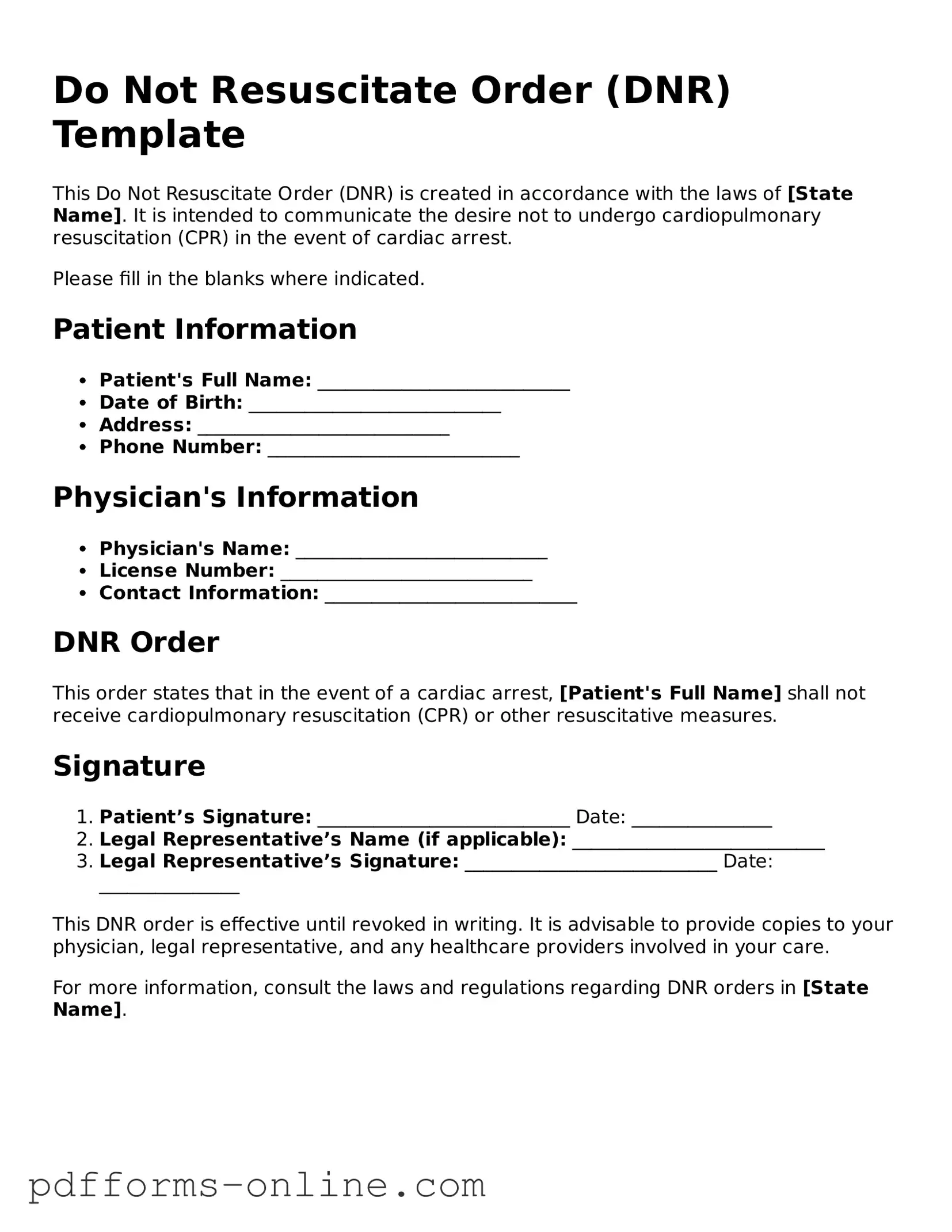A Living Will is a document that outlines an individual's preferences for medical treatment in situations where they are unable to communicate their wishes. Like a Do Not Resuscitate Order (DNR), it provides guidance to healthcare providers regarding the patient’s desires, particularly concerning end-of-life care. Both documents focus on the patient’s autonomy and ensure that their choices are respected in critical situations.
A Healthcare Power of Attorney grants a designated person the authority to make medical decisions on behalf of another individual if they become incapacitated. Similar to a DNR, this document emphasizes the importance of patient preferences. It allows individuals to choose someone they trust to advocate for their medical wishes, ensuring that their healthcare aligns with their values and desires.
An Advance Directive combines elements of both a Living Will and a Healthcare Power of Attorney. This document allows individuals to specify their medical treatment preferences while also appointing an agent to make decisions on their behalf. Like a DNR, it serves to communicate the patient's wishes, ensuring that healthcare providers understand their choices regarding life-sustaining treatments.
A Physician Orders for Life-Sustaining Treatment (POLST) form is designed for individuals with serious health conditions. It translates patient preferences into actionable medical orders. Similar to a DNR, a POLST form provides clear instructions to healthcare providers about the patient’s wishes regarding resuscitation and other life-sustaining measures, ensuring that those preferences are honored in emergency situations.
An organ donation consent form allows individuals to express their wishes regarding organ donation after death. While not directly related to resuscitation, it reflects the individual’s choices about their body after passing. Both documents highlight the importance of honoring a person's wishes and ensuring that their preferences are respected in critical situations.
A Mental Health Advance Directive allows individuals to outline their preferences for mental health treatment in case they become unable to make decisions. This document is similar to a DNR in that it empowers individuals to communicate their wishes regarding treatment, ensuring that their rights and preferences are upheld, especially during times of crisis.
A Do Not Intubate (DNI) order specifies that a patient does not wish to be placed on a ventilator in the event of respiratory failure. Like a DNR, a DNI order is a critical part of advance care planning. Both documents serve to communicate the patient’s preferences for life-sustaining measures and protect their autonomy in medical decision-making.
A Palliative Care Plan outlines the goals and preferences for care focused on providing relief from symptoms of serious illness. This document is similar to a DNR in that it prioritizes the comfort and quality of life for the patient. Both emphasize the importance of aligning medical interventions with the patient’s values and desires, particularly in the face of terminal conditions.
For those involved in the mobile home transaction process, understanding the necessary documentation is essential. Accurate completion of forms not only facilitates a smooth sale but also helps to avoid potential disputes later on. This is particularly true for the Mobile Home Bill of Sale, which is crucial for ensuring clarity between parties. To explore additional documentation that may be needed, refer to All Arizona Forms for a comprehensive list of resources.
A Do Not Hospitalize (DNH) order indicates that a patient does not wish to be admitted to a hospital for treatment. This document shares similarities with a DNR as both express the patient's wishes regarding the type of medical care they wish to receive. Both documents ensure that healthcare providers respect the patient's choices in critical situations.
A Medical Order for Scope of Treatment (MOST) form is used in some states to outline a patient’s preferences for various types of medical treatment. Similar to a DNR, this form provides specific instructions to healthcare providers regarding the patient’s wishes. Both documents serve to ensure that the individual’s choices regarding their healthcare are clearly communicated and honored during emergencies.
